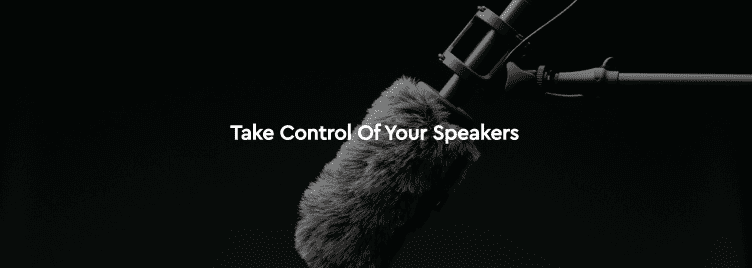
Take Control Of Your Speakers
We have scientifically proven the enormous power of in-store music, and what does the future hold for sound in spaces?
I sat down with Jasmine Moradi, Founder of SpaceSonology, and Former Head of Research at Soundtrack Your Brand (SYB) to talk about the impact of sound on in-store sales.
Here’s how it went:
You have conducted some incredible research into sound, can you tell us a bit about your work?
Firstly, I must point out the main focus of our research was brand-fit background music. This refers to songs and collections of songs that match a brand’s identity. It involves using processes to define a sound that matches a brand’s values in order to curate playlists with brand fit.
In our first study with fashion brand GANT, we asked: “How does matching background music affect customers’ emotions, brand image, and reaction, and does it lead to an increase in sales of consumer durables?”
Our results showed, that although the visual identity of the brand is crucial, the right music has to be designed in the same way to have a long-term emotional impact on the customer.
We discovered that matching background music played in GANT:
- Increased sales by 31.7%.
- Had a positive effect on customer satisfaction.
- Strengthen the brand image.
- Made customers stay longer.
This demonstrates that a store’s brand value and equity increased with strategically curated brand-fit music.
What about your study on background music in restaurants?
For this study we asked “Does the presence and choice of music have an effect on the restaurant’s KPIs?”.
Our results showed that it is better to play no in-store music, than to play radio music or music with no brand-fit. Sales decreased up to 5%, compared to the stores that played curated brand-fit music, increasing sales with 9.1% during a research period of five months with 2 million transactions.
It proved that architectural design strategies are crucial for any successful restaurant. By combining and matching visual design with sound design, brands can create the ultimate customer experience.
Amazing findings, but do you think many brands are utilising sound in the right way?
Not enough. Companies invest millions in graphic identity programmes and hire consultants to help communicate their visual brand to their customers, but they still overlook sound, and continue to play random background music in their stores, unrelated to the brand’s identity.
So why is background music so often overlooked as part of a brand strategy?
Lack of evidence-based research. And that’s where we came in. Our studies have contributed to increased awareness in how a wrong choice of in-store music may damage brand image and reduce sales. These studies were the first in the world to be conducted on a large scientific scale, able to prove these hypotheses. Brand-fit background music is a vital part of the brand and store experience.
But to further prove these results to brands, there is a need for an innovative analytical platform to optimise in-store music’s impact on the brand KPIs that can be measured in real-time.
What does the future hold for sound in spaces, will retail and restaurants make the right changes?
It is time for brands to wake up and invest their marketing budgets towards creating the most memorable store experiences ever. They should look towards online consumer behaviour first. All the success of Twitch, Tik Tok, Triller and the entire gaming industry, shows a change in how people consume experiences. People are easily bored and are seeking out new ways to get excited, even in traditional offline brick-and-mortar stores. I see a future of gamification and a “concert effect” entertainment experience. I believe this kind of interactive showrooms or flagship stores will keep retail and restaurants alive.
Let’s talk about the pandemic for a moment. How do you think brands should be reacting, could sound help?
There are definitely ways you could use sound to your advantage:
- Adjust the tempo or intensity of music being played. If a store decides to reduce seating, the sound should reflect the number of customers. Nobody wants to be in a big space with loud dance music by themselves.
- Help customers feel more comfortable with queuing. With the demand of social distancing comes long queues that create frustration and heighten awareness that we’re in a pandemic. Music both entertains and distracts customers from the situation.
- Music has the magical ability to fill up an empty space. Making customers and visitors who have to go to the new “ghost towns” of the pandemic, feel at ease.
To finish up, can you offer some key takeaways to brands looking to use sound in their strategy?
- Take control of your speakers, and make good choices. Analyse what music played in stores. Focus on how it is intended to affect the customers and staff.
- Play strategically curated brand-fit music that tells a story of your brand. It’s not about the music you like, it is about how you want your customers to perceive your brand. And don’t forget the visual design and the audio design have to speak the same language.
- Communicate changes with employees. Help staff understand the chosen background music so they understand how the music reflects and affects the company’s brand goals.
- Start measuring music’s impact. Your in-store music could continually add to user music research, and show you how music moved sales.
Find out more about Jasmine Moradi and her work at SpaceSonology. And if you need more convincing that you should be using brand-fit music, here’s 7 Reasons Your Brand Needs Curated Music.
by Doug Marshall CEO and Founder of www.altaura.com
